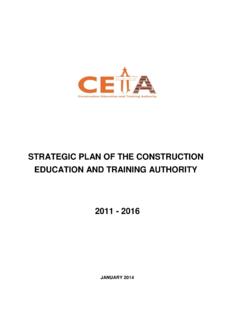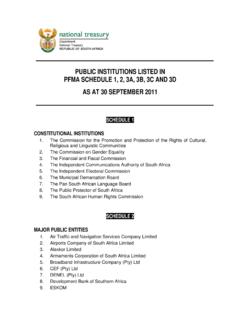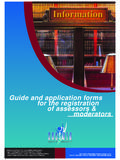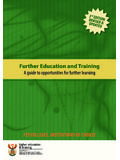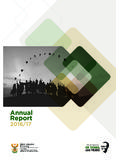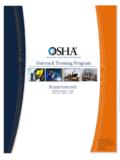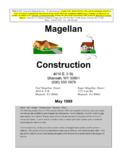Transcription of The recognition of non-formal and informal learning in ...
1 The recognition of non- formal and informal learning in South Africa Country Background Report prepared for the OECD Thematic Review on recognition of Non- formal and informal learning The recognition of non- formal and informal learning in South Africa August 2007. Report prepared by Ronel Blom, Ben Parker and James Keevy. The South African Qualifications Authority has granted the Organisation for Economic Co-operation and Development permission to include the South African Country Background Report on the OECD. Internet Home Page. The views expressed in this document remain those of the country authors and not necessarily those of SAQA, the OECD or OECD member countries. ii The recognition of non- formal and informal learning in South Africa Contents EXECUTIVE SUMMARY.
2 VI. Contextual Institutional arrangements .. vii Technical arrangements .. viii Stakeholder behaviour ..ix Case x Conclusion .. x Way forward .. x COMPONENT 1: CONTEXTUAL 1. Development of the South African NQF .. 1. COMPONENT DEMOGRAPHIC CHANGE .. 1. Profiles of learners and demographic changes .. 1. Graduation trends .. 3. Migration .. 4. National policy on migration .. 6. Changes in admission policies .. 6. COMPONENT INTERNATIONALISATION .. 10. Purpose of 10. Qualification types .. 12. Qualifications by Organising 12. Qualifications by country of origin .. 12. COMPONENT 13. COMPONENT ECONOMIC DEVELOPMENTS AND SKILLS. SHORTAGE/MISMATCH .. 14. COMPONENT OTHERS .. 19. COMPONENT 2: DESCRIPTION OF INSTITUTIONAL. 25. COMPONENT POLITICAL AND LEGAL FRAMEWORK.
3 25. COMPONENT GOVERNANCE AND THE ROLE OF GOVERNMENT .. 29. List of who does what' for formal learning and recognition of such 30. List of who does what' for non- formal and informal learning and recognition of such 30. Education and training legislation in support of the recognition of prior 31. Conclusion .. 36. COMPONENT 37. COMPONENT OTHERS .. 38. COMPONENT 3: DESCRIPTION OF TECHNICAL. 41. COMPONENT QUALIFICATIONS, QUALIFICATION SYSTEMS, QUALIFICATION FRAMEWORK .. 41. Credit 42. A developmental approach .. 42. Radical RPL .. 43. Trojan-horse' (transformational) 44. iii The recognition of non- formal and informal learning in South Africa The South African 44. A holistic approach to the process and execution of 45. A developmental and incremental approach to the 47.
4 Of RPL .. 47. The differing contexts within which RPL is implemented .. 47. Opening up of access to education and training and redress of past injustices .. 48. The dynamic nature of the construction of knowledge in a mature system .. 49. An outcomes-based approach .. 49. Determining equivalence of learning '.. 50. COMPONENT CREDIT ACCUMULATION AND TRANSFER .. 51. Current state of credit accumulation and transfer in South Africa .. 51. Possible stumbling blocks for improved credit accumulation and transfer .. 53. Recent developments that support improved credit accumulation and transfer .. 54. Recommendations for the implementation of credit accumulation and transfer in the context of the South African NQF .. 54. 55. COMPONENT ASSESSMENT METHODS AND PROCEDURES.
5 55. Methods and processes of assessment .. 56. Purpose and 58. The form, quality and sources of evidence .. 58. Candidate 60. The assessment process and appeals 61. A working 63. The nested' approach to standard generation and qualifications specification .. 63. COMPONENT OTHERS .. 69. COMPONENT 4: STAKEHOLDER BEHAVIOUR .. 71. COMPONENT CHARACTERISTICS OF STAKEHOLDERS .. 71. The purpose of RPL within the sector .. 71. COMPONENT ACCESS .. 72. COMPONENT PARTICIPATION .. 72. COMPONENT INCENTIVES AND 73. COMPONENT OTHERS .. 77. Workforce development projects .. 77. COMPONENT 5: CASE STUDIES OF BENEFITS AND. BARRIERS .. 79. COMPONENT ECONOMIC BENEFITS .. 79. COMPONENT EDUCATIONAL BENEFITS .. 79. COMPONENT SOCIAL BENEFITS.
6 79. COMPONENT PERSONAL BENEFITS .. 80. COMPONENT OTHERS .. 80. The Construction Education and Training Authority .. 80. The Free State Higher Education Consortium (FSHEC) .. 82. The South African Insurance Sector .. 84. COMPONENT 6: 87. REFERENCES AND READING LIST .. 89. iv The recognition of non- formal and informal learning in South Africa ACRONYMS .. 95. TABLES. Table 1: Growth in number of graduates according to type of highest qualification 1994-2004 (from SAQA, 2007).. 4. Table 2: South African population movements between 1996 and 2001. (thousands) (DoE, 2006) .. 6. Table 3: The state of RPL implementation in the technikon sector, 2002. (SAQA, 2002b) .. 8. Table 4: Social grants (PCAS, 2003).. 15. Table 5: Changes in access to basic services by poverty group (PCAS, 2003).
7 15. Table 6: Unemployment rate by population group and gender (Stats SA, 2004).. 16. Table 7: Proportions of employees by occupational category, race and gender (Stats SA, 2002b) .. 17. Table 8: Education by gender (DoE, 2006) .. 19. Table 9: Enrolments in Higher Education for 2002 (DoE, 2002) .. 22. Table 10: Who does what' for formal learning and recognition of such learning .. 30. Table 11: Responsibilities for RPL implementation .. 30. Table 12: Portability of qualifications (SAQA, 2005) .. 53. Table 13: Example of the self-audit tool: methods and processes of assessment (SAQA, 2002).. 57. Table 14: Assessment methods for RPL (Cohen in Harris, J., 2000:148-149)60. Table 15: NQF Level 7 level descriptor .. 64. Table 16: Possible assessment instruments.
8 68. Table 17: Purposes of RPL .. 71. Table 18: Redress practices, including RPL (SAQA, 2005) .. 74. FIGURES. Figure 1: The population distribution by age and sex (Stats SA, 2001) .. 2. Figure 2: Education by race (Stats SA, 2001) .. 2. Figure 3: Graduation trends by type of qualification (based on SAQA, 2007) . 3. Figure 4: Graduation trends by NQF Level of qualification (based on SAQA, 2007).. 4. Figure 5: The proportion of people who changed residence at least once between October 1996 and October 2001 by age category (Stats SA, 2001).. 5. Figure 6: Purpose of 11. Figure 7: Qualification 12. Figure 8: Adult illiteracy rates by race and gender 1999-2003 (DoE, 2006) . 19. Figure 9: Reasons for not continuing education, non-matriculated 15-18 year- olds, 1995 (DoE, 2006).
9 21. Figure 10: Highest level of education aged 20 and above (Stats SA, 2003) 50. Figure 11: Generic assessment process .. 61. Figure 12: An appeals procedure .. 63. Figure 13: Nested approach to standards generation and qualifications specification .. 64. Figure 14: Example of a designated 66. v The recognition of non- formal and informal learning in South Africa Executive summary Background 1. This country background report on the recognition of non- formal and informal learning in South Africa has been prepared by the South African Qualifications Authority as participant in the OECD activity on recognition of Non- formal and informal learning (RNFIL). 2. The RNFIL activity was initiated following a recent OECD activity that investigated the role of national qualifications systems in promoting lifelong learning (OECD, 2005) during which the recognition of non- formal and informal learning was identified as an important issue that required further study.
10 The overall purpose of the RNFIL activity is to provide policy makers with information for generating beneficial and equitable systems of recognising non- formal and informal learning . The project aims to explore existing models by taking stock of existing arrangements, and collecting and exploring related evidence. Working methods include desk-based research, field research, commissioned papers, workshops and an electronic discussion group. 3. The terminology used in this report is based on The recognition of prior learning in the context of the South African NQF (SAQA, 2002). and the Criteria and guidelines for the implementation of the recognition of prior learning (SAQA, 2004). The report constitutes a work-in-progress that will be further supplemented with data and findings from various South African and international stakeholders.










